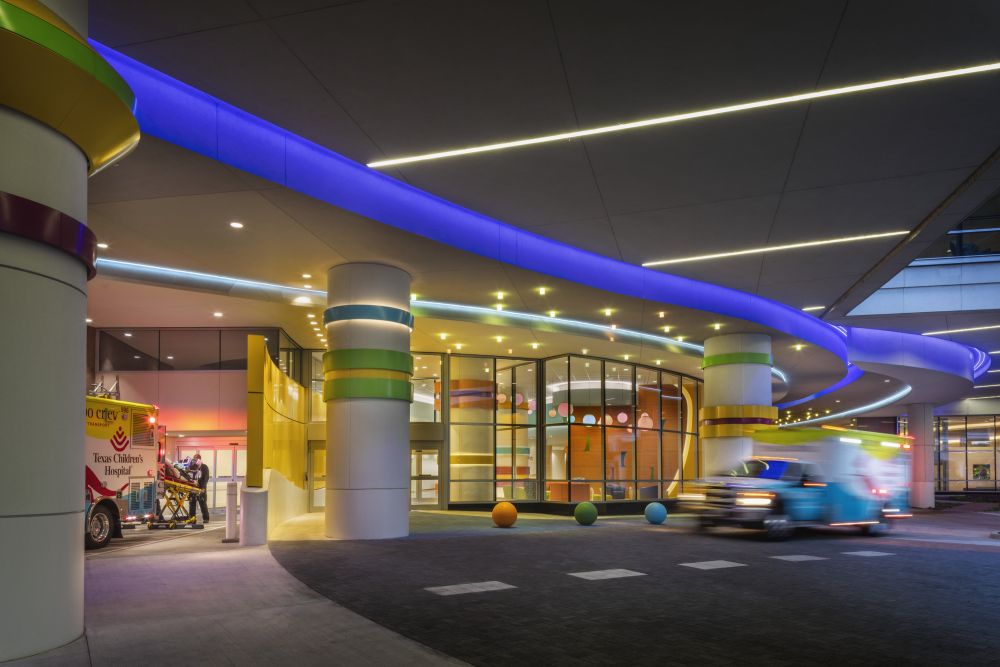Three takeaways from HORIZON Houston event on mental health and wellness
We were thrilled to host our Houston office’s inaugural HORIZON event focused on taking a deeper look at mental and behavioral health in Texas.
The discussion explored numerous topics including the lack of architectural guidelines for mental health facilities in Texas, the unique challenges in designing spaces for adults, children and college students, best practices, and ideas for creating spaces for patients and staff that are inspiring, safe and dignified.
The audience featured local health, education and business leaders, along with designers and real estate professionals. We were fortunate to have an incredible panel with leaders and experts from UT Health Harris County Psychiatric Center, Texas Health & Human Services, Texas Children’s Hospital, University of Houston and CannonDesign. The event showcased strong interest in the future of mental health in Texas and beyond. Here’s a look at three key takeaways from the event.
Safety is the number one priority
The main priority for every behavioral health institution is safety for both patients and staff. Most patients who are staying in a mental health facility can be risks to themselves or others, and care spaces need to be designed with that in mind. But most administrators don’t want their facilities feeling institutional. “In some of the designs of our new hospitals, we’ve had to be very creative in thinking through what can be used to cause harm to yourself,” said Mike Maples, Deputy Executive Commissioner for Texas Health & Human Services. “But you also want it to be a healing environment, you don’t want it to be like a cell. How do you balance those things?
“We looked at the types of behavioral health patients are coming into our facility who would inflict harm to themselves or others in the pediatric setting, those who ingest items,” said Rene Kacal, Facilities Project Manager, Texas Children’s Hospital. “Then we look around the room and see what we could do to minimize that risk.”
Access for all is crucial
A large part of the mental health crisis occurring today in the United States is access to care. Waiting lists for mental health facilities are lengthy, as both state-funded and private facilities do not have the capacity to meet the demand for their services. Gaps in the continuum of care from counselors to supportive housing also make access and avoiding readmission difficult.
“Having access when you are in your most desperate hour, when you may be a parent with a child in crisis, the last thing you want to hear is there’s a 200-person waiting list,” said Maples. “How can I make the most efficient use of my beds? How do I provide a healing environment with services that make people well as quickly as possible, isn’t a dreary place where people don’t get better, where staff want to work and families are comfortable bringing their loved ones there? As we sit down to design new hospitals that’s really been the focus.”
Universities are also confronting capacity issues, and are using group therapy as a potential solution. “Universities are quite proud when every year they can increase their population, but sadly when they increase by 1 percent, the need for mental health also increases,” said Floyd Robinson, former Associate Vice President for Student Affairs, Health and Wellness, University of Houston. “In higher education we have to become very mindful of spaces we develop to accommodate the increase.”
Research is needed on design’s influence on patient outcomes
Healthcare facilities rely on patient outcomes data to receive funding and reimbursement for services. Our panelists agreed that stronger research into how design influences patient outcomes would be helpful when it comes to renovating or building new behavioral health facilities.
“If we can fund more research on the intersection of design and outcomes, it would have a huge impact,” said Stephen Glazier, Chief Operating Officer of UTHealth Harris County Psychiatric Center. “Then you could have something anyone can use as they’re developing guidelines and deciding how they’re going to build buildings to give real evidence-based ideas about what does and doesn’t work. Really well-done research carries a lot more weight than our anecdotal stories.”
Glazier said he’s seen how things such as lighting, colors, and different spatial layouts can lower stress levels and aggression. He said providing multiple seating options has given patients the control to sit by themselves or with others. He added that concrete data of the benefits of these design choices would inform how behavioral health facilities evolve.



